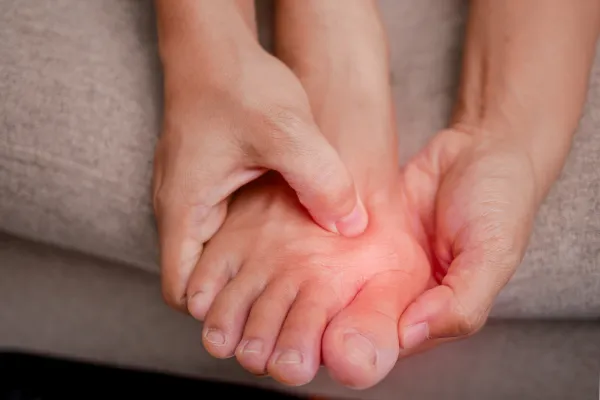
What Causes Bunions and How Can You Stop Them from Getting Worse?
If you’ve noticed a bony bump forming at the base of your big toe, you’re not alone. Bunions are one of the most common foot problems we see at Mary Moore Podiatry, especially among adults who spend a lot of time on their feet. While they often develop slowly, bunions can become painful and affect everything from shoe choice to your walking pattern.
But here’s the good news: understanding what causes bunions—and taking early steps to manage them—can make a big difference. In many cases, it’s possible to reduce discomfort and slow progression without surgery.
What Is a Bunion?
A bunion, also known as hallux valgus, is a structural change in the foot where the big toe shifts inward towards the other toes, causing a visible bump on the side of the foot. Over time, the joint at the base of the big toe becomes misaligned, often leading to pain, swelling, and difficulty finding comfortable footwear.
What Causes Bunions?
Bunions can be caused by a combination of factors, including:
Inherited foot shape: Genetics plays a big role. If bunions run in your family, you're more likely to develop one yourself, especially if you have flat feet or unstable joints.
Poor footwear: Tight, narrow shoes that squeeze the toes (think high heels or pointed-toe styles) can contribute to bunion formation or make an existing one worse.
Foot mechanics: Issues like overpronation (excessive inward rolling of the foot) or joint instability can place stress on the big toe joint.
Medical conditions: Arthritis, especially rheumatoid arthritis, can lead to joint changes that increase the risk of bunions.
Injury or trauma: Past foot injuries may alter how pressure is distributed in your foot, increasing bunion risk.
Bunions don’t form overnight. They usually develop gradually over years, and early warning signs may include redness, swelling, or a slight change in toe position.
How to Stop a Bunion from Getting Worse
While bunions can't be reversed without surgery, there are several ways to manage symptoms and prevent progression:
1. Choose Better Footwear
Proper shoes can make a world of difference. Look for:
Wide toe boxes that don’t compress your toes
Supportive soles with cushioning
Low heels (less than 2cm)
Adjustable straps or laces for a secure fit
If you’re unsure where to start, a Podiatrist in Dublin 9 can help recommend footwear that suits your foot type and daily needs.
2. Use Orthotics
Custom or over-the-counter orthotic insoles can support your arches and improve foot alignment. This reduces pressure on the big toe joint and slows the progression of bunions.
At Mary Moore Podiatry, we often combine orthotics with manual therapies or exercises for a more complete treatment plan.
3. Try Foot Mobilization Therapy
If your bunion is causing joint stiffness or discomfort, Foot Mobilization Therapy can help restore natural movement. This gentle, hands-on technique targets the small joints of the foot, encouraging better alignment and relieving tension.
Many patients at our Foot Clinic in Dublin 9 report improved comfort and better mobility with regular sessions.
4. Stretch and Strengthen
Exercises can help improve flexibility and strengthen the muscles around the foot and ankle. These might include:
Toe stretches
Towel scrunches
Calf stretches
Balance exercises
Consistent stretching can ease pressure on the joint and support better movement patterns.
5. Protect the Bunion
Silicone pads, toe spacers, or bunion guards can reduce friction and provide cushioning inside shoes. These are especially helpful if your bunion is irritated by footwear.
6. Monitor and Reassess
Even if your bunion isn’t painful now, it’s important to monitor it. If the shape of your toe changes or discomfort increases, it’s a good idea to seek advice early. A podiatrist can assess your foot and suggest tailored treatment options before the bunion progresses.
When Is Surgery Needed?
In some cases, bunion surgery may be recommended—especially if pain is severe or if conservative treatments no longer help. Surgery aims to realign the bones and correct the deformity, but it’s typically a last resort after other treatments have been tried.
We’ll always discuss all your options clearly so you can make an informed decision.
Take Care of Your Feet Before It Gets Worse
Bunions don’t need to rule your life. With the right care, footwear, and podiatric support, you can stay comfortable and active without surgery. Whether you’re just noticing changes or you’ve been living with bunion pain for years, it’s never too late to take the first step toward relief.




